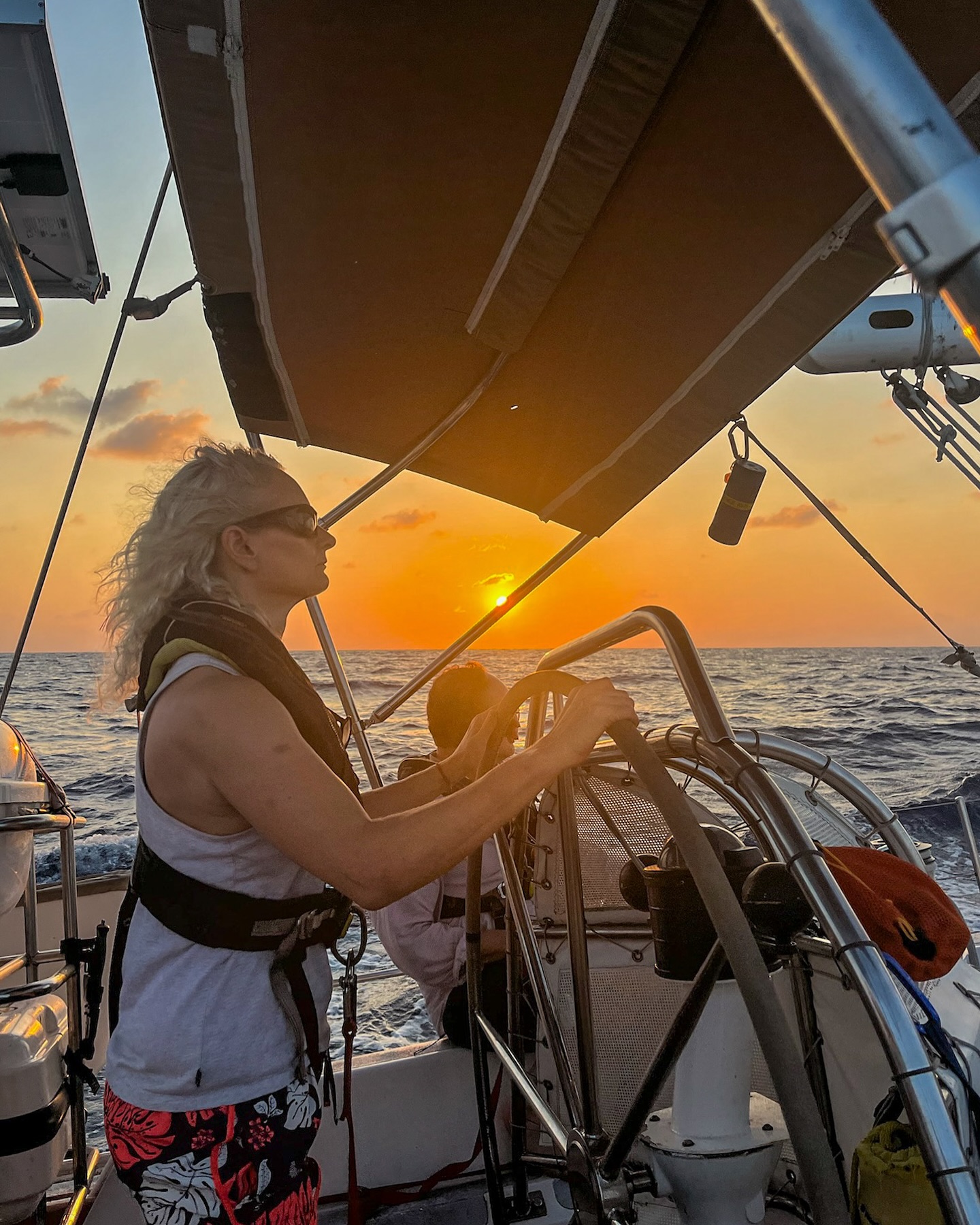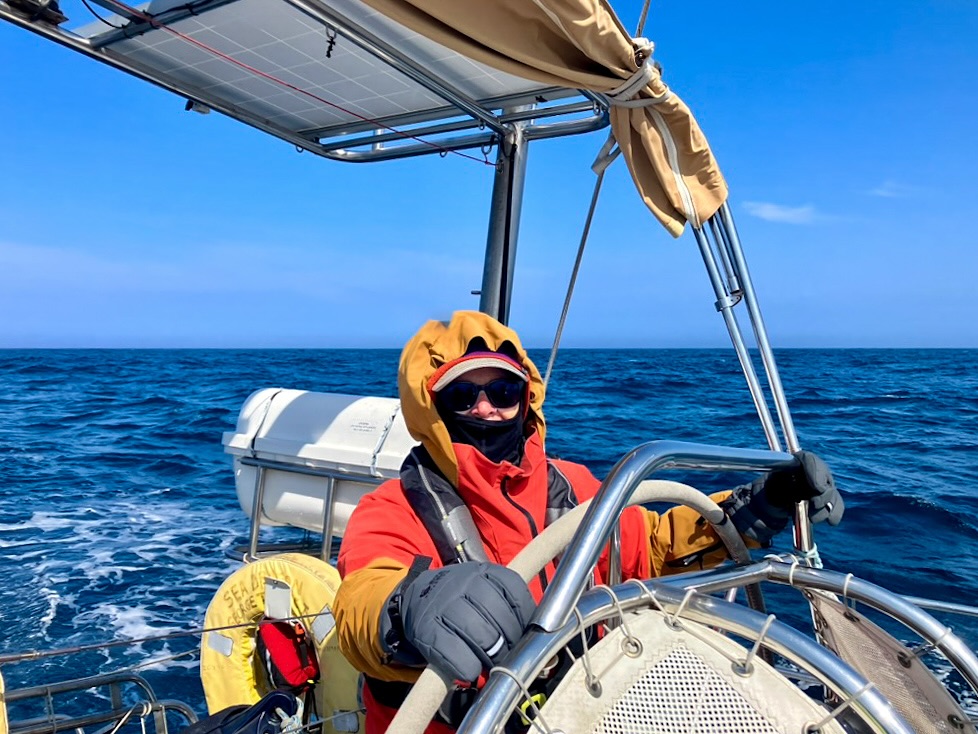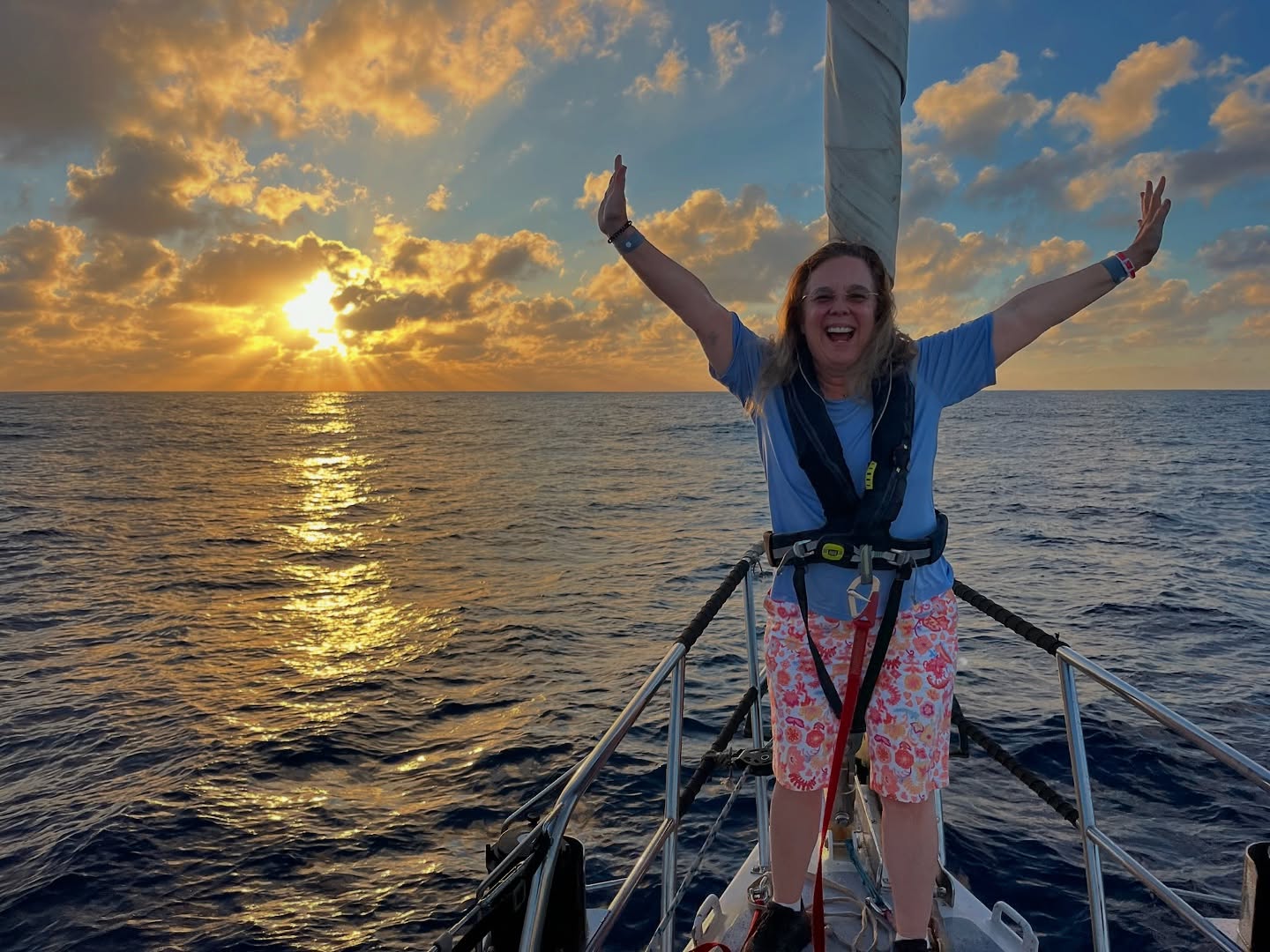Hawaii to Kiritimati
by Charlie Triggs – Deckhand aboard Sea Dragon.
Its been another busy week for Sea Dragon. We arrived in Hawaii on Friday 13th April and have been moored in the Ko Olina resort which is 17 miles up the coast from Honolulu. There are four manmade lagoons with perfect beaches, soft grass and floodlit palm trees. Its very different touristy vibe than that of Cabo a few weeks back… The team spent a relaxing weekend getting used to land. We stretched our legs by climbing up Diamond Head, a long extinct volcanic crater that offers fantastic views of downtown Honolulu and Waikiki beach. The path up the side of the crater was built in 1908 as part of the U.S Army Coastal Artillery Defense system. Many different batteries were built and decommissioned over the past 100 years, and now the fire control station at the peak of Diamond Head is a bustling tourist attraction. We also had to say a sad ‘Au Revoir’ to our deckhands Iona and Andy who’s time has come to leave Sea Dragon, but we are really excited to welcome Jess onboard who will be a deckhand on Sea Dragon for the next three months!
Since the weekend we have been cracking on with the ‘Hawaii To Do List’: Setting up a new Iridium communication system, building (and playing with) the new dinghy, fixing doors and hatches, making a bracket for the small outboard, servicing a few more winches, lots and lots of sewing for the bow webbing, installing the dive compressor, getting some more bunk fans, servicing and cleaning the main engine, along with 50 or so other tasks. Huddling around the list as Eric puts a line through each task completed had almost become a ritual at the end of each day, before having a beer and heading for a swim. It has all been great fun! I really enjoy learning new skills that are relevant to sailing and boat maintenance, and there is plenty of stuff to get stuck into. It’s also really satisfying to improve your floating home and making everything ship shape, fixing little things rather than just getting used to them and living around them.
This flurry of activity is in preparation for Sea Dragon’s next adventure. We will be sailing south to Christmas (Kiritimati) Island and spending a month with researchers from Woods Hole Oceanographic Institute (more on that in another blog). For over a month Sea Dragon will have to be completely self sufficient, whilst sailing around the Phoenix Islands and across the equator. We will be at anchor at Christmas Island with a dinghy ride to get us to and from limited amenities, so Hawaii is our last chance to stock up on most bits and bobs. Sea Dragon is loaded up with research equipment, enough fuel for the main engine, generator, compressor and three outboard engines, and most importantly, food for 10 people for over a month!
Shanley and Shannon tackled the provisioning. Its no simple task buying the correct amount of broccoli, finding the correct blends of tea in the supermarket, or trying to fit all the packets of couscous under the saloon seats. Especially when you can’t just run to the nearest shop when you run out of chopped tomatoes. A good way to go about buying food is with lots of lists and lots of numbers. Knowing roughly how much food is eaten per person per day and then multiplying to get the overall quantities is a good general start. The harder part is splitting these quantities up into different food that people are going to want to eat. Pasta and rice, cheeses, veg, sauces, herbs and spices, milk, juices, cereals… theres a lot to thing about!
Experience is also very useful and Shanley is an expert provisioner; having fine tuned this on Sea Dragon over the past five years she knows the right amounts of which foods to buy to keep everyone happy! It’s important to know how long fresh stuff will last and how much of it your going to need. Apples are great and will last for over a month when stored in a cool dry place, but with fresh mushrooms you’re lucky if they’re still good for much longer than a week. Meats don’t travel so well on boats with limited freezer space and can be a great way to introduce food poisoning on board. It also keeps the cows happy as well as being the more sustainable option to go meat free. One way to make the daunting provisioning task that bit easier is to tackle everything in stages. For our Hawaii provisioning we had three different food trips. A bulk items shop, like loose leaf tea, whole and healthy foods and biodegradable cleaning products. A big basic shop, this was the normal supermarket items of cereals, grains, snacks, tins, sauces, milk and juices. The final shop was for the all of the fresh bits which is best to do as close to departure as possible and to find the most local produce for longevity.
The environment that we will be sailing through will also change what stuff will last for longer or go off sooner, with temperature and weather also effecting what people eat. For a rough passage it’s a great idea to have a cupboard full of cuppa soups for when everyone feels a bit squishy and doesn’t want to spend any extra time down below. For the next month we will be dancing along the equator so its going to be hot. So ideally we don’t want to have the oven on too much as it’s also a very effective heater! Most of the cooking is done on the hob and using a pressure cooker, this cooks grains and beans really quickly and you can make some really yummy meals by chucking in a load of tasty ingredients. For ease there is a bread maker on board which takes about four hours to make a variety of delicious breads with very little effort.
Storage is an important consideration to keep food at its best and Sea Dragon has got a pretty good set up. Oranges and passion fruits do better in the open air so go in a hammock behind the helm on deck. There are wooden crates to separate other fresh food like potatoes and cucumbers which are kept in the starboard cabin out of direct sunlight. The tins are all labelled so you can tell whats in them when the labels rub off. Checking the fresh food regularly is important, especially on this trip where we wont be restocking our fresh supplies for a while, we want to make sure they last as long as possible.
Another important topic to think about when provisioning is the waste that is going to be produced. As food waste is biodegradable (and would really stink if it was kept on board) it goes over the side. All other waste on board is washed and then bagged by material so that we can recycle it when we reach land. Different countries have different laws and guidelines with what waste you can bring in, you are not allowed to bring any food waste into the U.S. This meant the food and agricultural waste department in Hawaii weren’t too happy with tea bags in our general waste bin. Unless it explicitly says on the label most tea bags contain plastic, so on route to Hawaii we were putting this in with general non recycled rubbish. This was classed as food waste and so we had to pay to get four bags of waste incinerated. We are now just using loose leaf tea which goes over the side with food waste. This is great as it means we are using less plastic and have less waste so it’s a win win.
Provisioning for passages makes you really aware about the amount of food you consume. I was amazed by the amount of food boxes that were on the dock as well as by all the jerry cans of fuel that we will use on this trip. Its a really nice feeling to know you are self sufficient for such a long time. This reminds me of an Ellen MacArthur TedTalk. In it she speaks about sailing around the world and realizing that her and her boat are not self sufficient, she will need to stop for food and fuel at some point, just as Sea Dragon will in a months or so’s time. This consumption on a boat is no different to what we are doing on our planet as a whole, and it is this thought that inspired Ellen to start her circular economy campaign. To consume less and recycle more. Being on a boat makes you realize how important this is as you can’t hide from it. You only have what you have, and when its gone its gone.






























